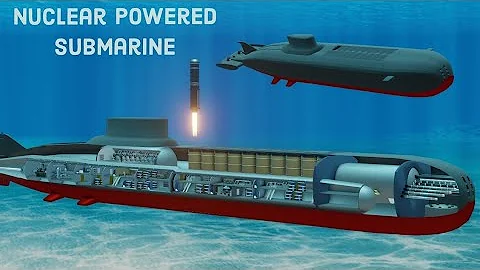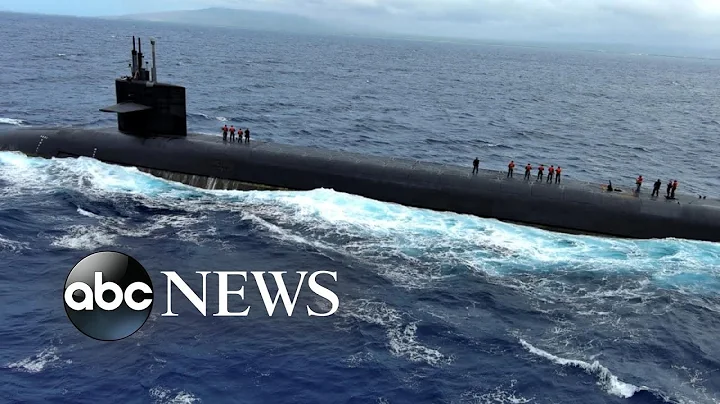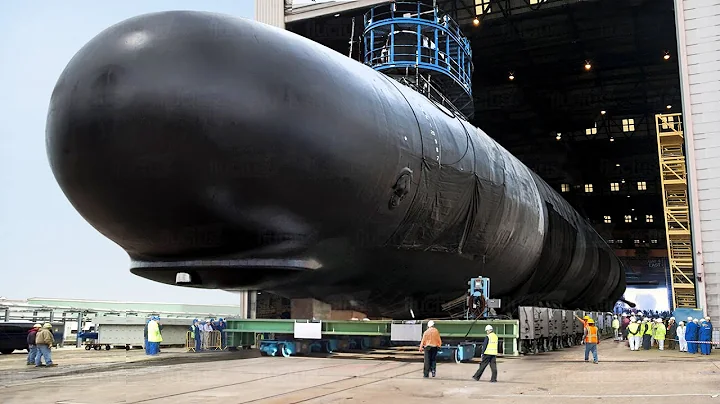
The picture shows the launch of submarine-launched missiles
Many submarines now have the ability to launch missiles underwater, but when nuclear submarines launch large missiles underwater, how to prevent seawater intrusion? This method is actually very simple: if you want to know what methods current submarines will use to ensure that when they launch missiles underwater, they will not cause seawater to pour into the interior of the hull.

The picture shows the submarine-launched intercontinental missile during launch
First of all, a considerable number of submarines will use torpedo tubes to launch the missiles. These missiles will automatically level and float after being ejected as torpedo, and will only float after reaching the water surface. The second ignition work will continue. For large nuclear-powered submarines such as intercontinental missile nuclear submarines, just completely seal the entire launch tube. As long as there is no problem when the missile is launched, then let it get in without water. Good to go.

The picture shows the intercontinental missile that has just emerged from the water
But for those strategic nuclear submarines , the launch of each intercontinental missile means that the weight of the submarine is reduced by dozens of tons in an instant. If after the missile is launched, it does not go If the inside of the submarine is filled with water, then as the number of missile launches increases, the submarine will become lighter and lighter. It may even be that after the submarine launches all intercontinental missiles, the submarine will be damaged due to excessive weight loss. There is no way for a nuclear submarine to sink, so under normal circumstances, those nuclear submarines that store and launch intercontinental nuclear missiles will not care whether their intercontinental missile launch tubes will be submerged in sea water after launch, because this is what they expect of.
However, seawater is corrosive, which means that these nuclear submarines cannot allow seawater to enter the interior of the launch tube before launching the missile and corrode the missile. Therefore, most intercontinental missile nuclear submarines will damage the missile launcher before launching the missile. The interior is pressurized, and this pressurization not only allows the air pressure and water pressure inside and outside the missile launch tube to be relatively balanced, allowing the submarine to successfully open the main protective cover of the launch tube, but also ensures that after the main protective cover is opened, the internal The waterproof covering film will not be completely torn off due to high external water pressure, thus ensuring that the entire barrel remains in good waterproof condition before the missile is launched.

The picture shows the intercontinental missile being launched
But all this becomes no longer important after the missile is launched: because most submarines today use thermal launch technology to help them launch large missiles underwater. This means that before the equipment inside the launch tube is corroded by seawater, it has first passed through the high-temperature tail flame of the missile, and most of them will be completely burned. What kind of corrosion will the seawater cause to them next? There will be no impact on the operation of these devices.
This also means that for the vast majority of large nuclear submarines that launch intercontinental missiles, after launching the missile, the inner barrel of the launch barrel must not be completely replaced, but it must be completely overhauled. As for the seawater's subsequent impact on the launch barrel The corrosion of the internal structure is probably not as severe as the combustion of the rocket tail flame, which reaches a high temperature of several thousand degrees instantly when the missile is launched. In addition, after the nuclear submarine launches the missile, it also needs to inject seawater into the launch barrel and re-weight it with itself. , Therefore, whether water enters the launch tube is only a trivial problem for current intercontinental missiles and submarines.









![Royal Navy Test Launches Trident II Nuclear SLBM [HD] - DayDayNews](https://i.ytimg.com/vi/p5fOaBnlT2E/hqdefault.jpg?sqp=-oaymwEcCOADEI4CSFXyq4qpAw4IARUAAIhCGAFwAcABBg==&rs=AOn4CLDC5Rlw1T3dNyO5J6Ra1fbu1_n5Bw)











